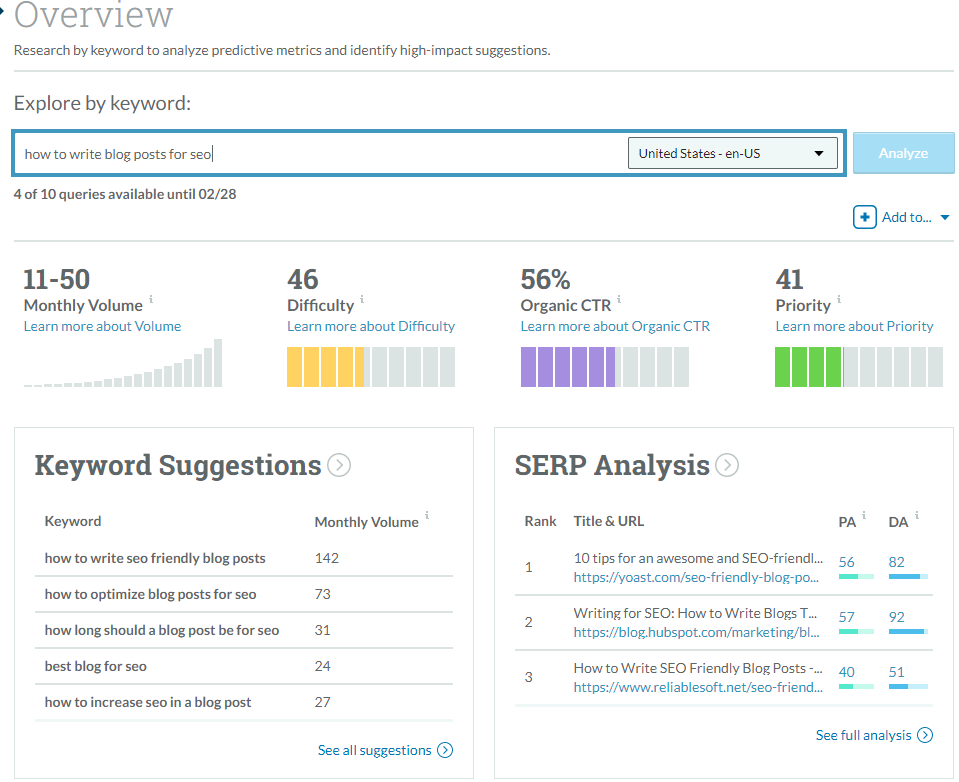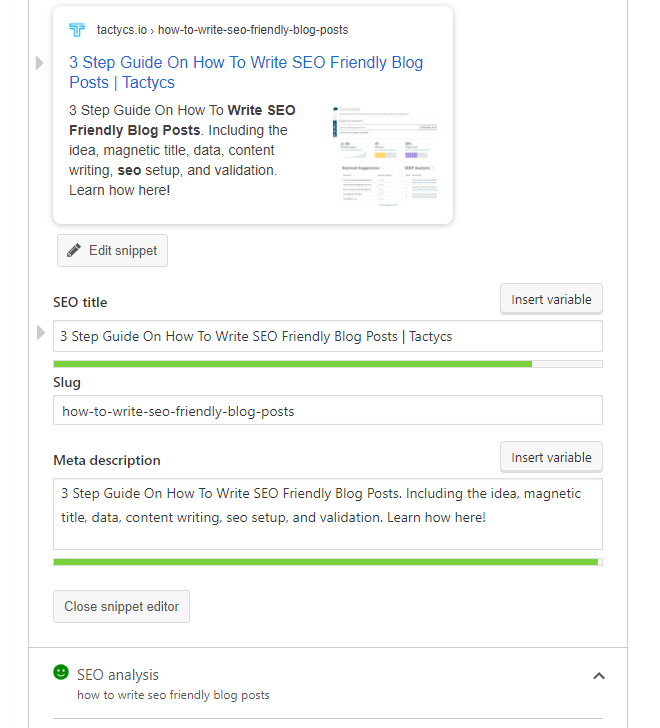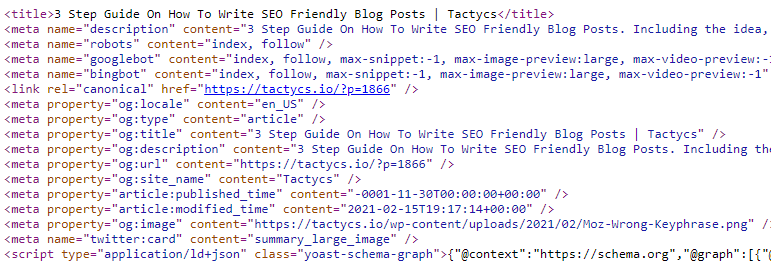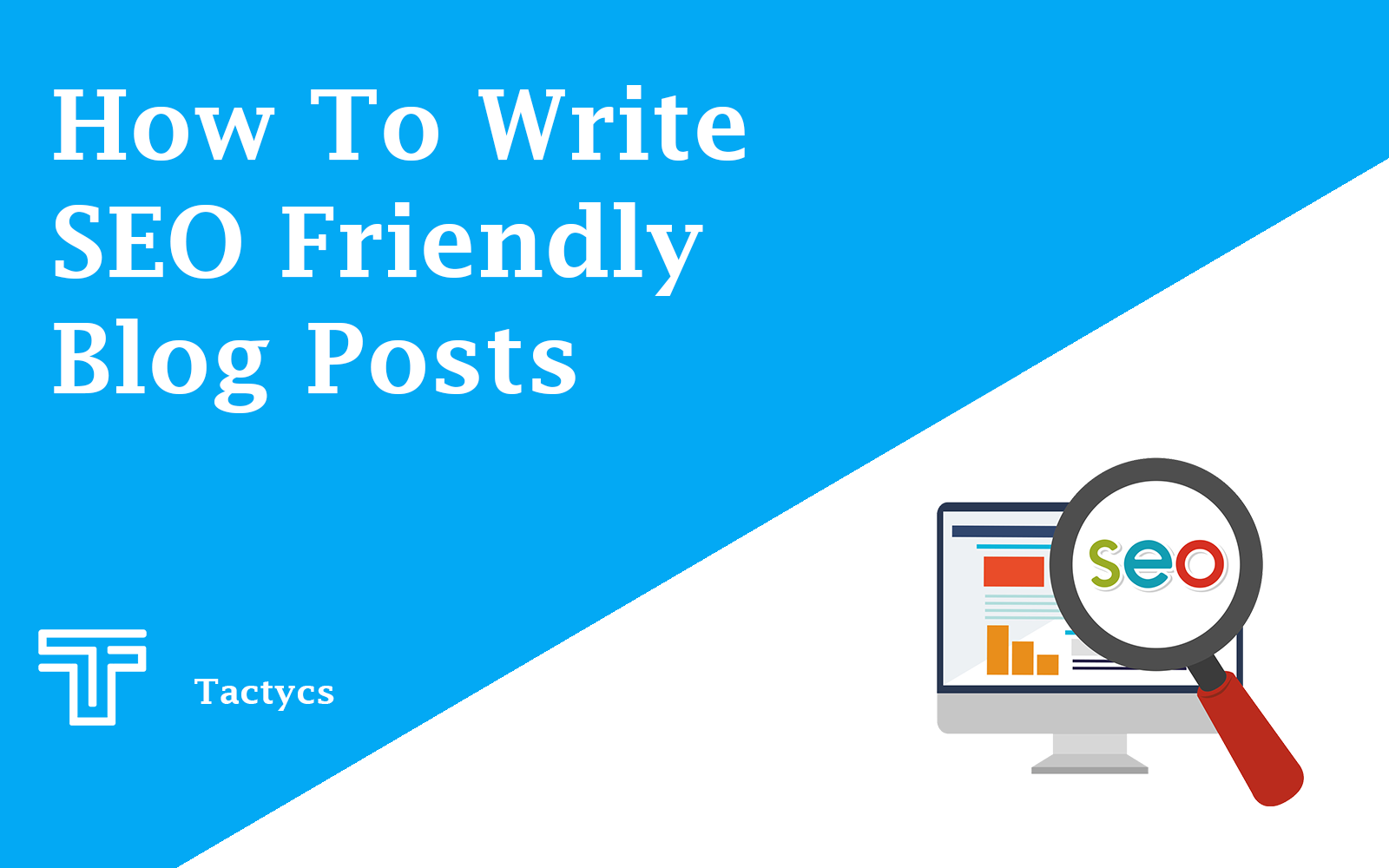How To Write SEO Friendly Blog Posts
Writing a search engine optimized (SEO) friendly blog post has become a well documented process. Below is a breakdown of the 3 major steps you need to follow.
The first question we want to ask ourselves is whether we are posting blogs on our own site or on a third-party site such as Medium.
Seeing as you’re here to learn about writing a blog post I think it’s best we continue under the impression that this will be hosted on your own website. We want the traffic and all the benefits that come with it.
3 Step Guide Quick Links:
Download Our Free SEO Friendly Blog Post Checklist Here
Blog Post Ideas
Topic Ideas
The first step to writting a new blog post is decided what our topic should be. A critical step in this process is understanding that you aren’t writing to simply put content out, instead you should aim to provide value, instructions, entertainment, etc. to your audience. Your content will not be found or engaged with organically if it does not genuinely help your target audience.
Here a few questions to ask yourself to get started on blog ideas:
- What have your customers asked you for help with?
- Are there resources you often use during the sales process or during your customer relationship?
- What would one of your customers turn to Google for?
Just put yourself in the shoes of your audience and be one step ahead on a pain point, an area of confusion, etc. Go to different search engines and start typing in your answers to the above 3 questions and see what comes up.
Checking The Data aka. Keyword Research
Next, we want to verify our thought process on the topic idea.
Are people really searching for the solution you want to write about?
A quick process to check the data:
- Google Search – Pop into an Incognito browser and see what autofill’s in the search query as you type various phrases about your idea
- Keyword Research – There are countless free tools to help you here
- Adwords Keyword Tool: Ideal for keyword data (3 words maximum)
- Moz Keyword Research: Great for keyphrase research
A quick example of why this is so valuable. The following picture is from the Moz tool. You can see I originally searched for “How to write blog posts for seo” only to find out that the competition is lighter and the traffic is higher on “how to write seo friendly blog posts”.

Magnetic Titles
A perfect segway from the data we just collected. You’ve conducting your keyword research and you’ve found your keyword or keyphrase. So the question becomes, how do I make that more magnetic or clickable.
There are many ways to do this. One of the most common techniques is turning it into a “# steps to do X”. There’s also the general “How To” or “Free Template” or “Checklist”. Really it comes down to the benefit that is understood from that single title. It must clear and concise on why a user would get what they need from clicking that title. In this scenario, I want it to become evident that this blog simplifies and explains clearly how to optimize a blog post.
Content and Design
Content
Often times we get blinded by the opportunities that SEO provides. We can’t forget that the most important piece for an SEO friendly blog post is GOOD content.
That means we need to provide quick, helpful, concise value to the reader. In this blog, the hope is that the user can visualize their own blog process as they read. Creating multiple “that makes sense moments” as they get further and further in.
You can have the best SEO implementation, focus keyphrase, link development (internal and external links) in the world, if the content is weak or useless then users won’t stick around.
When you’re first getting used to things, we typically recommend that companies focus on guides, templates, how-to’s, checklists, ultimately anything that will provide immediate value for free.
Design
When it comes to design, the industry standard is pretty low in Tactycs’ opinion. Comparing the visual elements of a blog to almost any other marketing material is always interesting. It’s a bit of an expected delivery when it comes to blogs
Users have come to anticipate what the blog structure will be. Where the headlines, call-to-actions, ads, videos and what not will be placed. I would consider this a benefit for people who are in the early stages of getting blog traffic and writing blog posts.
Keep things simple and clean. A few images to spruce up the point you want to get across or a snippet of what you want the user to download.
Finally, don’t forget the call-to-action. If we get as far as getting a user to click and read the entirety of our blog, they’ve liked what they read or acted upon it, but we have no next steps for them. It’s wasted traffic.
The conversion should be specific to the blog. A downloadable for a physical resource on the topic. A link to a product that solves the problem for you. A link to a contact that they can call for further help.
Search Engine Optimization Setup of A Blog Post
The following list of items focuses on the top level seo we can implement on the specific blog post. There are many additional items we can improve on site wide but for the purposes of creating seo friendly blogs this will be specific.
SEO Tool
Depending on the content management system (CMS) your website is created on the instructions will change. Our personal preference is WordPress as it allows for the highest level of control. If you are also using WordPress, check out the free version of Yoast. If you are using Wix or SquareSpace they have built in tools that allow you to do SOME of the items below.
Focus Keyphrase
Referring back to the data we collected and the magnetic title we have setup we should already know our focus keyphrase. This is step one and will impact every step that follows. The focus keyphrase should be reflected as much as possible (with certain exceptions, to be explained below).
SEO Title
Before we talk about how to setup your seo title, quickly open another tab and hover your mouse overtop of the tab preview (at the top of your browser). You will see a pop-out that includes what’s referred to as an SEO Title.
A relatively easy change, available in Yoast as well as the alternative CMS free tools.
We are given a limit of how long our SEO title can be. A blanket solution here is as follows:
Focus Keyphrase (As shown via blog title) | Company Name
In most blog post scenarios that will take up most of the space. If not, add a related keyphrases before the company name.
To get some ideas and examples go to your preferred search engine and type in your focus keyphrase or related keywords. Scroll through the search engine results pages and you’ll be able to see what others are putting.
Meta Description
The meta description is the small excerpt that search engines shown below a link on a the search results page. We want this description to firstly include our focus keyphrase and secondly intrigue users on reading more. If you’ve done the above steps properly, the focus keyphrase will be aligned with the value and the value will be enough to intrigue.

Image Alt Tags
Next we want to go back through any images we added to the blog and set them up with image alt tags. This piece of information allows Google to scrape the image and understand what it is.
We want to quickly explain exactly what is in the photo while using the focus keyphrase if possible. These can sometimes be difficult and different seo experts will argue on whether you should force the keyphrase in. I typically say prioritize making that photo accessible by Google first and foremost.
Keyword Density
This item refers to the frequency at which the focus keyphrase shows up in the written content. Depending on the length of the blog, the amount of recommended keyphrases changes. Using Yoast, it will automatically monitor and let you know if it thinks you have to few or too many.
It’s important to not overdue it on the density. This is referred to as keyword stuffing and will impact your results negatively.
Some typical rules, blogs should be at minimum 250 words long. Lets call it 1 keyphrase input per 100-200 words. Utilizing variations of keywords may help make it feel more natural. That range is the sweet spot, where you’ve optimized your posts for search engines but haven’t gone to far.
Permalink
The permalink of your blog post is the url that will show for readers. A quick example:
tactycs.io/how-to-write-seo-friendly-blog-posts/
The bolded portion includes the focus keyphrase once again. In WordPress this can be edited on the sidebar after clicking the title. It may require a manual edit! Be sure to do this early on, there’s nothing worse than having to go back and change areas that linked to a different permalink (avoid the broken links).
Also don’t add the date or year to your permalink. Because who want’s outdated information. They day you posted and the following year it might be considered relevant but what about 5 or 10 years from now? If you want to change the date in your URL, it will basically be like publishing a new blog post from scratch, which would mean giving up months or even years of SEO credibility that you’ve built with Google.
Headings
H-Tags or heading tags are used by Google. They are considered ‘important content’, Google values when the focus keyphrase is listed in H1 or H2 tags.
The actionable here is ensuring that if a user only looked at your headings they can quickly see what the purpose / value of the blog is. Btw, this is what most people will do anyway. You’ve probably skimmed this content and just read the headings yourself. Which means the headings need to helpful and reiterate the keyphrase where applicable.
Link Development
Link development refers to the amount of inbound and outbound links. This can be considered on an internal link (within the domain) and external link (outside of domain) basis. These internal links help search engines crawl your site deeper and allow you to keep visors on your site for longer. External links make your content more credible in the eyes of your readers and search engines.
The simple concept is the more links that point to your blog the better. You want as many trusted sources of traffic to be linking to your domain and specific blog as possible. Not only does it lead to more traffic visiting you but it also leads to Google giving you more trust.
As an immediate step, be sure to link to other pages on your site within the blog (internal links). Getting valuable backlinks can be difficult, start with your network and see if anyone can assist.
Post Attributes
We want to cover off a few additional items that add value and consistency to the post. The following items help SEO and the content/design of the blog post:
- Categorization – Set the category of the blog post according to the rest of your website. The navigation to said category should make sense and align with the purpose of the blog.
- Tags – Set up multiple tags, pulled from within the blog. These may be quick one or two-word keywords that would lead to said blog post.
- Excerpt – Similar to the meta description, this excerpt is the internal tidbit of information that will show on your blog archive page.
- Featured Image – The parent visual to represent the content within the blog.
Page Source Check
We’ve covered off most of the search engine optimization, now we want to make sure things are working the way we want them too!
Open up your page in preview mode, right click on the page and select “view page source”. Then either Ctrl+F or scroll down until you see the indicators shown in the below image. We should see our SEO title, meta description, etc. Keeping in mind the below snippet was taken before the post went live we can see the SEO title, the meta description, the robots.txt instructions, the permalink (preview mode version), an image and it’s file name.

Testing Your Knowledge
Look back through this blog and consider what the focus keyphrase was (I’ve gone overboard on purpose). See if you can identify the areas I used to enhance my content.
Also don’t forget we have a free downloadable checklist that follows the above guidelines, you can find it here!
If you feel like blog writing is an important piece in your marketing strategy but still can’t get the results you need from it. Shoot us a message or give us quick 10 minute call and we’ll help you align your overarching marketing strategy to specific objectives to granular content.
